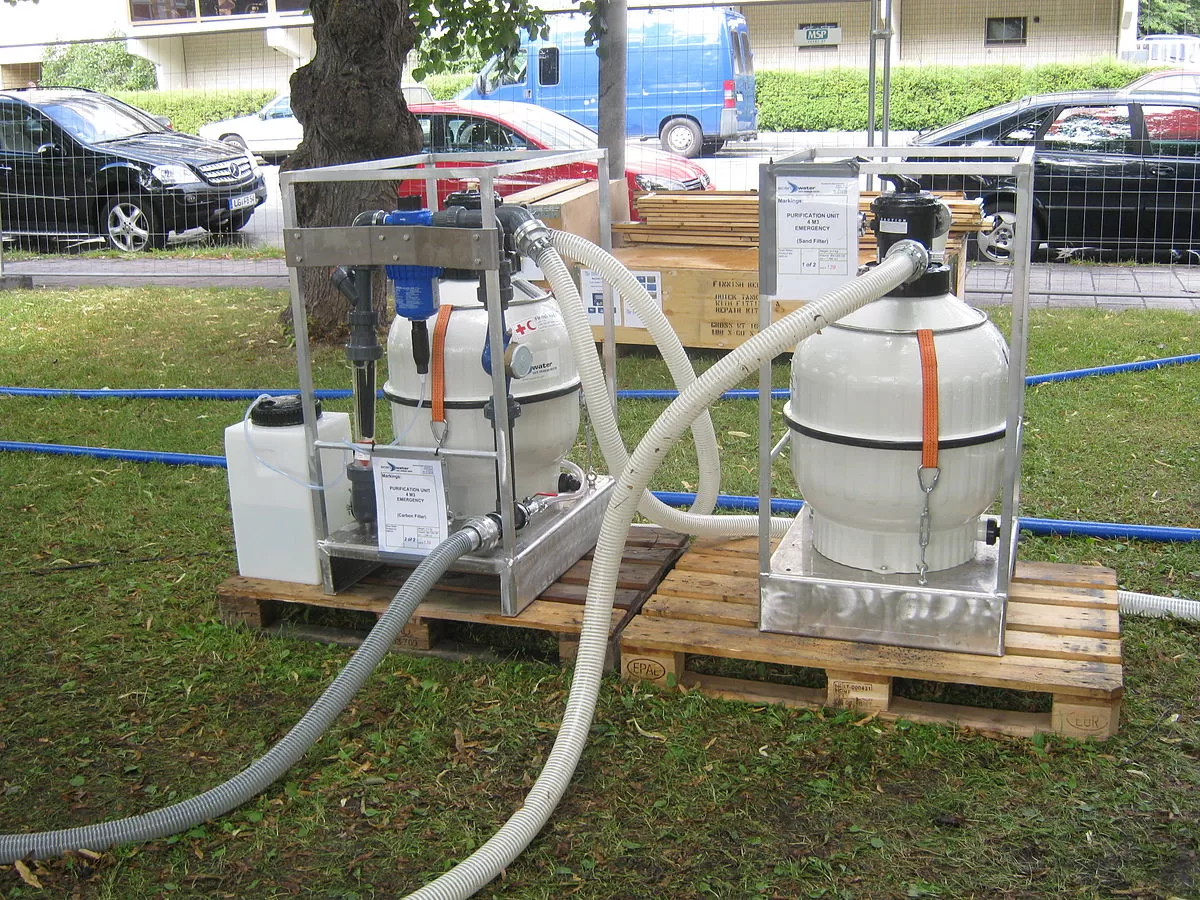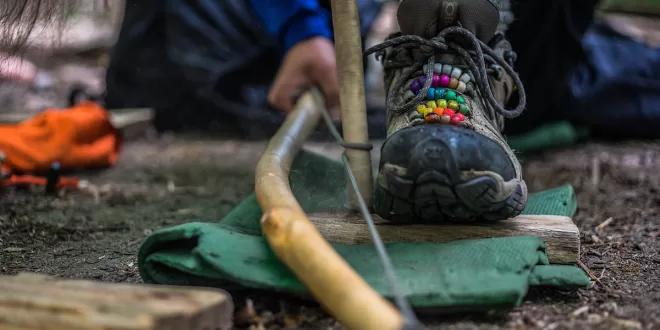In a world where uncertainty has become the norm, knowing how to adapt, react, and survive is no longer a fringe hobby. It has become a life necessity for anyone who values independence and safety. The ability to endure hardship without outside help comes down to one key factor: skill. Having gear is important and stocking supplies is essential, but skills are what make those tools truly effective. Without the right knowledge, even a warehouse full of equipment will not save you.
Skills are the great equalizer between those who simply own survival gear and those who can truly thrive in difficult times. Anyone can buy a fancy water filter, a survival knife, or a top-of-the-line tent, but if you cannot use those items in high-pressure situations, they are little more than dead weight. In a crisis, there is no time for guesswork, you need to have practiced until the actions are second nature. This is why the most prepared people are often the ones who quietly train, learn, and refine their abilities long before they need them.
Every skill you learn today is an investment in your independence tomorrow. Whether you live in a high-rise apartment, a rural farmhouse, or anywhere in between, these survival skills apply to you. They have been proven over centuries of human experience and yet many people have never practiced them even once. The good news is that learning them now not only prepares you for worst-case scenarios but also makes everyday life more self-reliant and secure.
“Preparedness is not a state of mind you reach, it is a discipline you maintain.” — Cody Lundin, survival instructor and author of 98.6 Degrees: The Art of Keeping Your Ass Alive
As we move closer to an unpredictable future, mastering these ten skills before 2026 will give you an undeniable advantage when things go wrong. Each one is timeless, adaptable, and proven to save lives when the situation turns hostile. These are not optional hobbies; they are lifelines.
1. Water Purification and Collection
Without clean drinking water the human body begins to fail in only a few days. Water purification is not just about owning a high-tech filter. It is about knowing how to make water safe to drink in any situation. Learn to identify natural water sources, use boiling to kill pathogens, and apply chemical purification methods with bleach or iodine. These are not complicated skills, but they require practice so you can execute them under stress.
Even if you own a premium filter, practice purifying water without it. Filters can clog, break, or run out of replacement parts. Improvising with cloth filtration, solar stills, or homemade bio-filters could mean the difference between survival and disaster. The confidence that comes from knowing multiple purification methods ensures you can adapt no matter the circumstances.
The CDC offers detailed guides on treating water for backcountry travel, while the EPA provides simple instructions for emergency disinfection using bleach or boiling. These are skills you should learn now, not during a crisis. The time to experiment and fail safely is before you are in a situation where failure means dehydration or illness.

2. Fire Starting in Any Conditions
Fire is not just warmth. It provides light, safety, the ability to cook food, purify water, and signal for help. Mastering fire starting means being able to ignite a flame in wet weather, high winds, or with limited resources. Practice with waterproof matches, ferro rods, and flint and steel. Also learn primitive friction methods such as the bow drill so you are not dependent on modern tools.
Keep at least three reliable fire-starting methods in your survival kit. A lighter might work in fair weather, but when it is raining and your hands are cold, you will be glad you know how to find dry tinder and build a fire that catches quickly. Understanding which fire structures work best, teepee for heat, log cabin for cooking, long fire for sleeping warmth, can give you a serious edge.
The National Park Service provides campfire building tips, but nothing replaces hands-on practice. Try making a fire after a rainstorm, in wind, or in the dark. By forcing yourself to adapt to these conditions now, you will not be caught off guard when it matters most.
3. First Aid and Medical Response
A well-stocked first aid kit is only as good as the person using it. Basic medical knowledge such as stopping bleeding, splinting fractures, treating burns, and recognizing signs of shock is invaluable. Learn CPR, how to use an AED, and field-expedient techniques for situations when medical gear is limited. These abilities can mean the difference between stabilizing someone until help arrives and losing them entirely.
In a disaster, professional help may be hours or even days away. Being able to stabilize injuries and prevent infection dramatically increases survival odds for you and those around you. This includes knowing how to improvise when the exact supplies you need are unavailable, using a belt as a tourniquet, clean cloth as a bandage, or a stick as a splint.
The American Red Cross offers affordable courses that can prepare you for everything from daily accidents to major disasters. By taking such training now, you ensure that when someone’s life is in your hands, you will act with knowledge and confidence instead of panic.

4. Navigation Without GPS
When cell towers fail and GPS stops working, navigation skills will separate the prepared from the lost. Learn how to read topographic maps, use a compass, and identify landmarks. Being able to plot a course and travel confidently without electronics is critical in both wilderness and urban settings.
Navigation is not just about moving from point A to point B, it is about doing so safely, efficiently, and with enough awareness to avoid hazards. Understanding contour lines, elevation changes, and natural indicators such as the position of the sun can prevent you from walking into dangerous terrain or wasting energy on unnecessary detours.
The USGS offers free access to downloadable topographic maps. Practice using them now so you are ready when technology fails. Carry a reliable compass, and if you can, learn celestial navigation basics for situations where even your compass may be compromised.
5. Shelter Building and Temperature Control
Exposure to extreme temperatures can kill faster than hunger or even dehydration. In cold climates, hypothermia can set in within hours if you are not insulated from wind and wet conditions. In hot environments, heatstroke can hit just as quickly, especially without shade or adequate hydration. This is why shelter building and temperature control are core survival skills for every prepper, camper, and outdoorsman.
Learn how to construct emergency shelters from both natural materials and whatever man-made resources you have at hand. A basic lean-to or debris hut can be made from branches, leaves, and bark, while a tarp or emergency blanket can provide instant coverage if you know how to secure it. In urban scenarios, even an abandoned vehicle, stairwell, or basement can become a safe haven with some modifications to control airflow and temperature.
The CDC Winter Weather Safety guide explains how to stay warm during storms, while the CDC Heat and Your Health resource provides critical advice for avoiding heat-related illness. Combining this knowledge with hands-on shelter building practice ensures you will not just survive but remain stable and clear-headed in any weather conditions.
6. Food Procurement and Preservation
Stored food supplies will eventually run out, and in a long-term crisis, resupply may be impossible. Knowing how to hunt, fish, trap, and forage gives you a renewable food source. Equally important is learning how to preserve what you gather so it lasts beyond the immediate meal. Skills like smoking, drying, canning, and fermenting food will keep you nourished through lean times.
Start by identifying the edible plants, berries, nuts, and fungi in your local area. Even in urban environments, there are wild edible options such as dandelion greens, acorns, and certain tree barks. Small-game trapping and fishing are highly efficient for producing protein without expending excessive energy. Always follow safe handling practices to avoid contamination and foodborne illness.
The USDA Safe Minimum Cooking Temperatures Chart is a vital reference. Learn it and use it. A well-prepared forager or hunter not only gathers food but also ensures it is safe to eat, avoiding the disastrous consequences of improperly cooked meat or poorly preserved goods.
7. Self-Defense and Security
When law enforcement is unavailable and order breaks down, your ability to defend yourself and your family becomes critical. Self-defense is not solely about combat, it is about deterrence, situational awareness, and layered security measures that prevent trouble before it starts. This includes both unarmed techniques and responsible use of tools or firearms.
Learn basic hand-to-hand skills that allow you to break free from holds, disable an attacker, and create space to escape. Non-lethal tools like pepper spray or a tactical flashlight can be highly effective for defense without escalating to deadly force. If firearms are part of your plan, train regularly in safe handling, marksmanship, and maintenance so you can use them effectively under stress.
Your home should also be part of your defense strategy. Simple measures like reinforcing doors, securing windows, and installing motion-activated lighting can deter intruders. In a crisis scenario, these defensive preparations can make you a less attractive target, reducing the likelihood of conflict altogether.
8. Situational Awareness
Situational awareness is your ability to perceive and interpret what is happening around you in real time. It is one of the most important survival skills because it allows you to detect danger before it becomes unavoidable. This skill is as important in the grocery store parking lot as it is in the wilderness.
Train yourself to notice changes in behavior, unusual activity, or environmental cues that suggest something is wrong. For example, a sudden quiet in a crowd, an unfamiliar vehicle parked in an odd location, or shifts in weather patterns can all be early warning signs. Reacting early gives you time to leave, hide, or prepare before danger reaches you.
The DHS outlines how to recognize and report suspicious activity. Pair this with tools like a NOAA Weather Radio from the NWS to receive real-time alerts. Information is power, and the more you know about your surroundings, the safer you will be.
9. Communication in a Blackout
When the grid goes down, communication becomes a lifeline. You will need ways to coordinate with family, gather information, and call for help if needed. This means learning to operate two-way radios, CB radios, and ham radios, and having backup power to keep them running.
Ham radio, in particular, can reach far beyond the range of most consumer communication tools. Learning to operate one requires licensing in most countries, but the investment pays off in unmatched reliability during large-scale outages. CB radios and walkie-talkies are also useful for shorter-range communication between team members.
The ARRL provides training and licensing resources for amateur radio operators. Practice using your gear now so it is second nature when the pressure is on. In a crisis, fumbling with an unfamiliar device wastes time and could cost lives.
10. Mental Resilience and Adaptability
All the skills in the world will not matter if you panic or freeze when faced with danger. Mental resilience, the ability to stay calm, think clearly, and adapt under pressure, is the backbone of survival. This mindset can be built through intentional challenges, training, and pushing yourself out of your comfort zone.
Adaptability is equally important. No plan survives first contact with reality, and those who can pivot quickly often fare far better than those who rigidly cling to a failing strategy. Practice making do with limited resources, changing course when your first approach fails, and staying mentally flexible when your environment shifts unexpectedly.
Consider activities like wilderness camping, endurance events, or even cold showers as small ways to build mental toughness. By putting yourself through controlled hardship now, you train your mind and body to stay composed when real adversity strikes, and that is what will keep you alive when others give up.
 Survive Our Collapse Building Self-Reliance in an Uncertain World
Survive Our Collapse Building Self-Reliance in an Uncertain World




